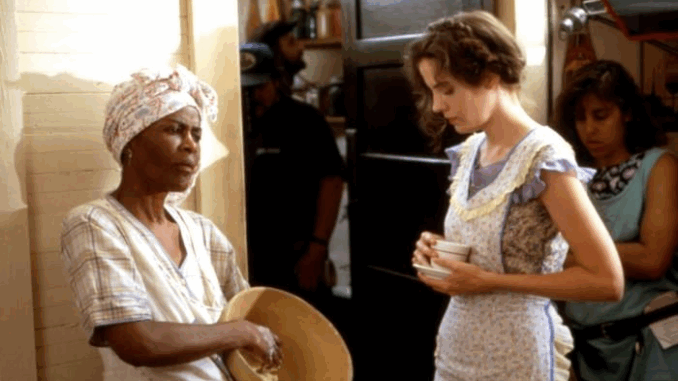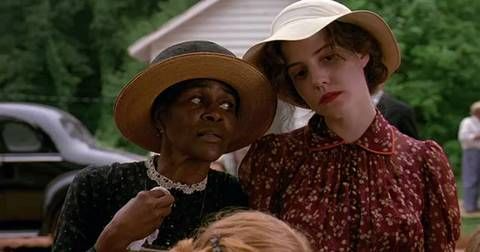
More than 30 years after its release, Fried Green Tomatoes remains a beloved gem in American cinema—a story about memory, resilience, and the life-changing power of friendship. While it may have premiered in 1991, its emotional truths continue to resonate, not only with those who saw it in theaters, but also with new audiences discovering it through streaming platforms and college film courses.
So what is it about this quiet Southern drama that continues to strike a chord decades later?
A Story Rooted in the Heart
Set across two timelines—the present-day 1980s and the Depression-era South—the film tells the story of Evelyn Couch, a middle-aged woman stuck in a joyless routine, who finds unexpected inspiration through the tales of Ninny Threadgoode, a charming elderly resident of a nursing home. Ninny’s stories transport Evelyn—and us—back to Whistle Stop, Alabama, where the rebellious Idgie Threadgoode and the gentle Ruth Jamison built a life of loyalty, community, and quiet defiance.
At its core, Fried Green Tomatoes is a film about connection. It’s about how one woman’s life can be changed by listening to the story of another, and how the past echoes into the present in powerful, often healing ways.
A Feminist Narrative in Disguise
At first glance, Fried Green Tomatoes appears to be a sentimental drama. But beneath its warm surface lies a deeply feminist narrative. The film champions female friendship, agency, and transformation.
Evelyn begins the film as timid and overlooked—her feelings ignored, her desires buried. As she listens to Ninny’s stories, she slowly rediscovers her voice and her worth. It’s not through a romance or a career boost, but through reclaiming her autonomy. She learns to speak up. She learns to say no. She learns to say “Towanda!”—a battle cry for women who are tired of being silenced.
Meanwhile, the story of Idgie and Ruth, though not labeled as romantic in the film, is a portrait of deep love and partnership between two women who raise a child, run a business, and protect each other from a violent world. That bond—never needing the approval of outsiders—is quietly revolutionary, even today.
Southern Gothic with a Tender Soul

Part of what gives Fried Green Tomatoes its lasting appeal is its tone. It weaves together humor, tragedy, nostalgia, and suspense in a way that feels natural and lived-in. There’s a murder. There’s domestic abuse. There’s racism, injustice, grief, and longing. And yet, the film manages to wrap all of that within a humanistic embrace. These characters endure. They adapt. They help each other.
The Southern setting isn’t used as a backdrop for clichés. It feels real—complete with dust, biscuits, train whistles, and secrets buried in the woods. The cinematography invites us to slow down, to breathe in the world of Whistle Stop. It’s no wonder fans still travel to Juliette, Georgia, to visit the real-life Whistle Stop Café.
Representation and Its Limits
Of course, no retrospective would be complete without acknowledging the film’s limitations. The decision to downplay the romantic nature of Idgie and Ruth’s relationship—preserved in full in Fannie Flagg’s novel—was a reflection of early ’90s Hollywood risk-aversion. Likewise, the film’s depiction of its Black characters, while affectionate, still centers them as side figures in a white narrative. Sipsey and Big George play crucial roles in the story, but we see them mostly through others’ eyes.
Still, the film has endured in queer and feminist spaces because it plants seeds. It shows a version of life that many viewers—especially women—long for: a chosen family, a meaningful friendship, a place where your voice matters.
Why It Still Matters Today
In 2025, audiences crave authenticity more than ever. They want stories that aren’t afraid to blend sadness with joy, hardship with humor. Fried Green Tomatoes fits this perfectly. It offers a balm in uncertain times—a reminder that change is possible, that healing can come from unexpected places, and that every person, no matter how overlooked, has a story worth telling.
It also stands out in an era of fast-paced media. It’s a film that asks you to slow down and listen. To spend time with characters as they grow. To care. That emotional patience is increasingly rare—and deeply valuable.
The Verdict
Fried Green Tomatoes didn’t win Best Picture. It didn’t dominate the box office. It didn’t loudly demand your attention. But it earned a permanent place in the hearts of those who found it—and those still discovering it.
It reminds us that storytelling is powerful. That friendship is transformative. That love doesn’t always look like a Hollywood romance. And that sometimes, the best thing you can offer someone is a story—and a plate of fried green tomatoes.
